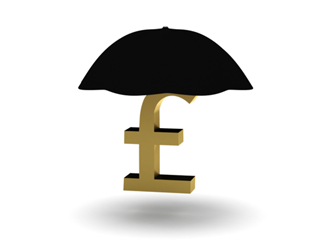When it comes to savings your money there’s lots of choices. Instant Access Accounts, Term Deposits, ISAs… Magical Penny is reviewing each one over the next few weeks to help you find the best way to grow your pennies.
We’ve already outlined the magic of an instant access savings account: it’s easy to set up and acts as an important separator from your current (checking) account, whilst still being accessible for when you need it. In practical terms an instant access savings account is perfect for saving for irregular expenses: like insurance premiums that come around once a year, or for saving for your summer holiday in a few months time. But what about other savings goals?
 “ISA ISA BABY”
“ISA ISA BABY”
Once you have managed to save a few months of expenses in an instant access savings account, your next goal (if you’re in the UK) should be to open an ISA (Individual Savings Account). At the moment it’s ISA crazy in the UK and if I’m honest, I’m loving it: ISAs are great and here’s why:
Interest Free Savings
For all other types of savings accounts you don’t get to keep all of the interest that you earn on your pennies. For example if you allowed £100 to grow in a 5% savings account, you would have earned £5 after a year. But you’ll only get to see £4 (assuming tax is at 20%). It might not seem much but as your savings grow the difference between taxed and non-taxed accounts grows substantially.
In the UK we have a great opportunity to save tax-free for anything we want. Compare this to in America where tax free savings are limited to retirement (Roth IRAs) and education (Education Savings Accounts) and have strict terms, conditions, limits and penalties. Put in this context, ISAs are amazing especially as we already pay tax on our earnings so it makes sense to take advantage of avoiding tax on our savings.
More Tax-Free Savings than Ever Before
Starting from next week (April 6th 2010) you will be able to save up to £5100 in cash over the next year. This is the highest amount ever since ISAs were introduced in the UK in 1997. Considering that all interest earned this year and for all subsequent years will be tax-free it’s one of the best risk-free things you can do with your money.
Important Considerations
Enough with the cheer-leading. Whilst ISAs are awesome, there are a few things to consider:
Avoid taking money out where possible
You cannot replace any money you take out of ISA over the course of a year as the £5100 allowance is measured by how much you put in. For example, if you put £5100 in an ISA next week then take out £3000 next month, you cannot then put that money back in the account as you have already used the full yearly allowance. You’ll have to wait until April 2011 and open a new ISA to make any future tax-free savings.
To use another example if you put £1000 in then take £500 out to go on holiday, you can only put another £4100 in the account over the rest of the year, leaving you with a maximum account value of £4600. It’s still a lot of money but by taking money out you have prevented yourself from taking full advantage of the tax-free saving threshold.
For this reason ISAs are perfect for medium term goals like savings for a car or a house deposit, rather than short-term savings goals –because for medium term goals you should not be planning to repeatedly dip into your savings for holidays and irregular expenses. For those of us in our 20s we are unlikely to be able to manage to save enough to reach the threshold but every little bit counts!
Bait and Switch
 As Tax-free saving is such an appealing idea ISA products are big business in the UK. Almost every bank and UK building society (similar to credit unions in the US) offers an ISA, and every year there’s plenty of head-line grabbing interest rates. However, the interest rates advertised may not be what they seem. You may see a headline rate of a 3% ISA but this most likely will consist of a low interest rate (say 0.5%) and a bonus rate (making up the remaining 2.5%). Such ‘bonus’ tactics give some ISAs an edge in the savings account ranking tables but can leave you with a very low rate of return once the bonus period ends (after 12 months is typical). It’s great for banks because the headline rate attracts lots of pennies but then, after a year or so, they get essentially free use of your money as the interest rate drops to close to 0% and most people leave the money alone. Despite these tactics ISAs are still worth it given the favourable tax-free growth that you can enjoy year after year but you must not forget to ‘tranfer’…
As Tax-free saving is such an appealing idea ISA products are big business in the UK. Almost every bank and UK building society (similar to credit unions in the US) offers an ISA, and every year there’s plenty of head-line grabbing interest rates. However, the interest rates advertised may not be what they seem. You may see a headline rate of a 3% ISA but this most likely will consist of a low interest rate (say 0.5%) and a bonus rate (making up the remaining 2.5%). Such ‘bonus’ tactics give some ISAs an edge in the savings account ranking tables but can leave you with a very low rate of return once the bonus period ends (after 12 months is typical). It’s great for banks because the headline rate attracts lots of pennies but then, after a year or so, they get essentially free use of your money as the interest rate drops to close to 0% and most people leave the money alone. Despite these tactics ISAs are still worth it given the favourable tax-free growth that you can enjoy year after year but you must not forget to ‘tranfer’…
Don’t forget to transfer
 Given that most ISA providers drop the interest rate on the account after a year it makes sense to transfer your ISA funds to a better performing account after a year. You can do this with a transfer form once you’ve found a better ISA provider that accepts ‘transfers’.
Given that most ISA providers drop the interest rate on the account after a year it makes sense to transfer your ISA funds to a better performing account after a year. You can do this with a transfer form once you’ve found a better ISA provider that accepts ‘transfers’.
You can transfer your ISA money as many times as you want: this works because an ISA isn’t a savings account itself, it’s simply a ‘tax wrapper’ or ‘umbrella’ over a savings account that stops your pennies from being rained on by tax.
As understanding the transfer process is such an important step when it comes to ISAs Magical Penny will be walking you through this process in the coming weeks (I’m doing it myself shortly!).
In the mean-time, do not manually transfer funds to a new ISA by taking your ISA money out of old account and depositing it into a new one –doing so will result in losing your ISA allowance: remember, the allowance is measured by the amount of money going into an ISA over the course of the year. The transfer has to be done internally by the ISA providers themselves. It’s a simple process but most people forget about it, and end up having multiple ISAs with different providers who are paying close to 0% in interest.
I hope this post has made ISA rules a little clearer for you and that you take advantage of ISAs in the new tax year.
Have a great Easter everyone and repeat after me: “ISA ISA BABY!”
You must log in to post a comment.
{ 1 trackback }